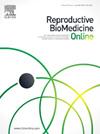A SINGLE-CENTER EXPERIENCE OF OVARIAN TISSUE TRANSPLANTATION IN 15 PATIENTS
IF 3.7
2区 医学
Q1 OBSTETRICS & GYNECOLOGY
引用次数: 0
Abstract
Objective
Ovarian tissue cryopreservation (OTC) and transplantation has become a promising option for fertility preservation in women facing the risk of premature ovarian failure. We aim to report our experience with 15 patients who underwent frozen thawed ovarian tissue transplantation (OTT).
Methods
This retrospective cohort study included 15 women who underwent OTT in our tertiary referral center between December 2011 and June 2024. All the patients had previously undergone OTC using a slow freezing protocol with a home-made pre-prepared freezing medium including DMSO and sucrose. All patients diagnosed with acute leukemia had received consolidation chemotherapy prior to OTC before undergoing bone marrow transplantation (BMT). A medical clearance was obtained from each patient's hematologist-oncologist, and a vial of tissue was thawed to screen for the presence of residual leukemic cells. All OTT procedures were performed laparoscopically, with the ovarian cortical fragments being transplanted either into a retroperitoneal pocket (n=11), created 2 days earlier to enhance vascularization, or directly onto the menopausal ovary (n=1), or both(3).
Results
All 15 patients who underwent OTT regained ovarian function, as demonstrated by decreased FSH levels, increased estradiol and resumption of menstruation. Patient characteristics are shown in Table 1. No major surgical complications or adverse events were observed. The median age at OTC and OTT were 23.31± 7.9 years and 32.6 ± 1.48 years respectively. The indications were as follows; leukemia (n= 6), lymphoma (n=5), breast cancer (n=1), pineal gland tumor (n=1), thalassemia (n=1), and aplastic anemia (n=1). Mean serum AMH before OTC and following OTT was 1.37± and 0.16±0.11, respectively. Following IVF, 8 healthy live births occurred in 6 patients (Two of them was twin), summing up a pregnancy rate of 45.46% per patient (5/11) in those undergoing IVF (Patient 15 does not included). In one patient diagnosed with acute leukemia, IVF resulted in a healthy ongoing pregnancy following second OTT, and in another patient diagnosed with acute leukemia 2 euploid blastocysts were frozen in the first ovarian stimulation cycle (patient 14). In patient 15, who had 2 previous IVF cancellation due to POR, a healthy live birth occurred from the menopausal ovary following retroperitoneal OTT. Except one patient who underwent OTT very recently, no relapse was recorded in 5 patients with acute leukemia over a mean follow-up >50 months. Graft survival was > 24 months in all patients.
Conclusion
Transplantation of frozen thawed ovarian tissue remains a promising and established technique for fertility preservation, with prolonged graft longevity and increased pregnancy rates. We suggest that OTT may be feasible in carefully screened leukemia survivors following BMT.
求助全文
约1分钟内获得全文
求助全文
来源期刊

Reproductive biomedicine online
医学-妇产科学
CiteScore
7.20
自引率
7.50%
发文量
391
审稿时长
50 days
期刊介绍:
Reproductive BioMedicine Online covers the formation, growth and differentiation of the human embryo. It is intended to bring to public attention new research on biological and clinical research on human reproduction and the human embryo including relevant studies on animals. It is published by a group of scientists and clinicians working in these fields of study. Its audience comprises researchers, clinicians, practitioners, academics and patients.
Context:
The period of human embryonic growth covered is between the formation of the primordial germ cells in the fetus until mid-pregnancy. High quality research on lower animals is included if it helps to clarify the human situation. Studies progressing to birth and later are published if they have a direct bearing on events in the earlier stages of pregnancy.
 求助内容:
求助内容: 应助结果提醒方式:
应助结果提醒方式:


